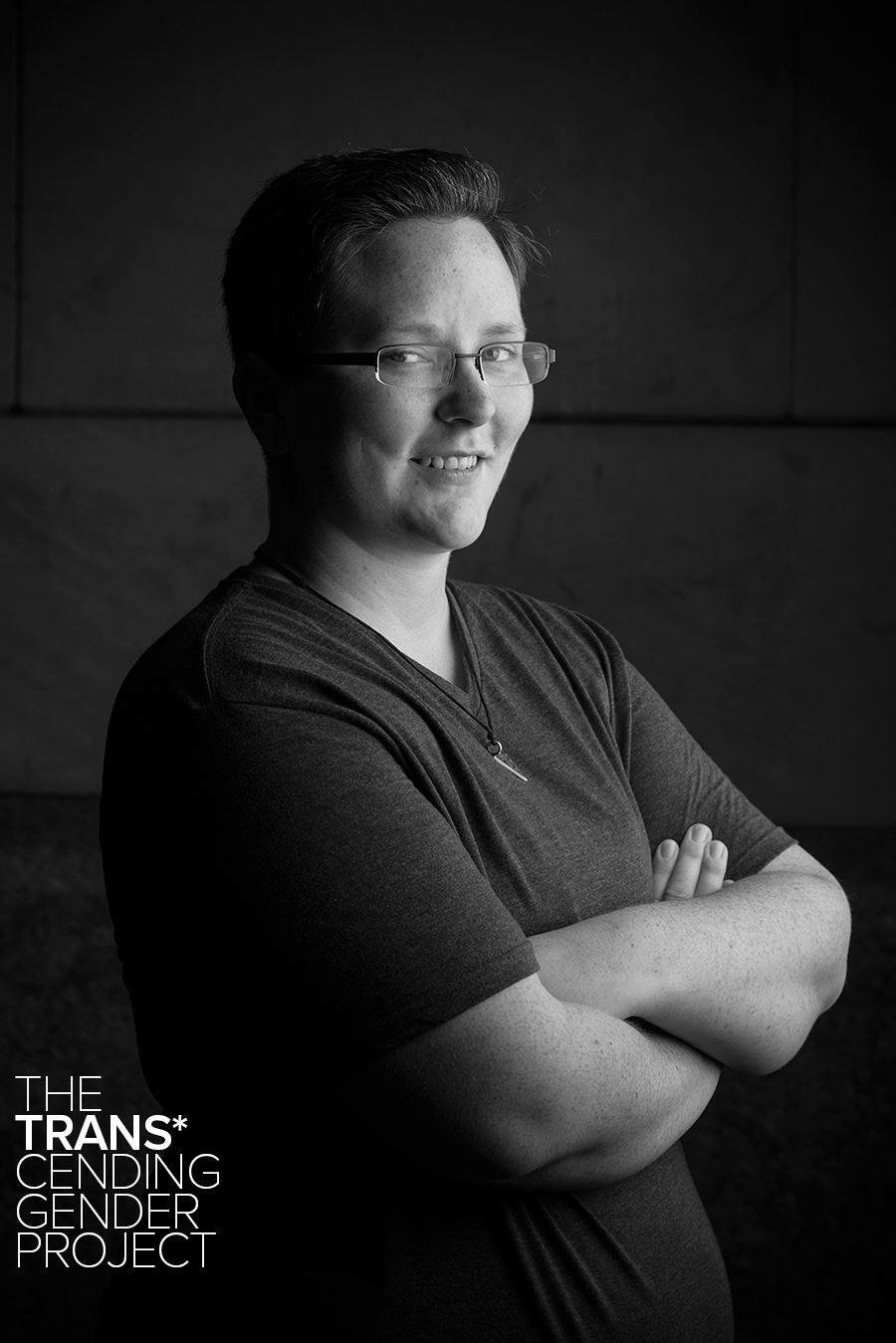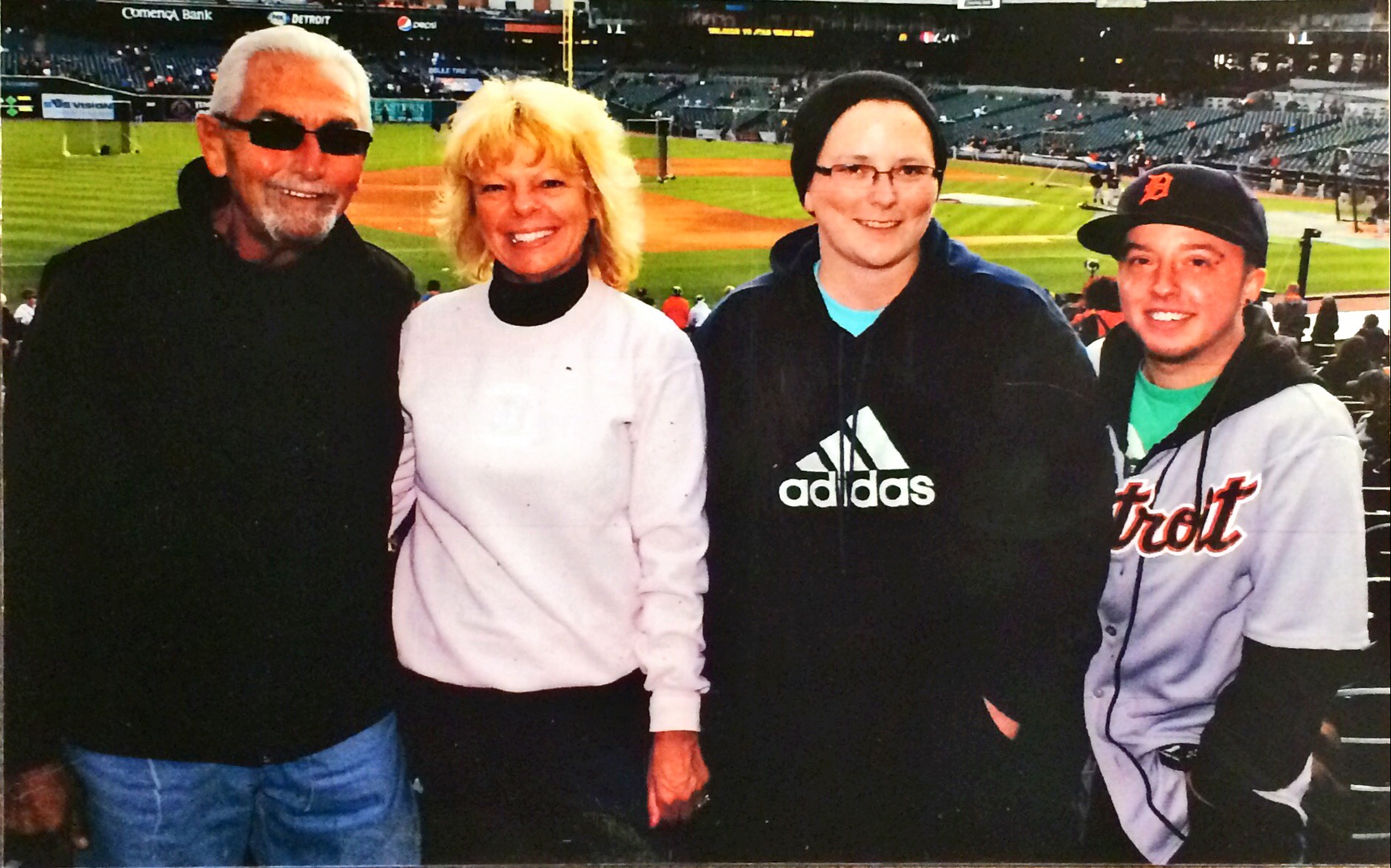The brave example of his best friend inspired this transgender man to express his truth to everyone.
This is part of a story series about the lives of transgender people. Read the introduction here.
 Growing up in a small town in Michigan, Ashton Niedzwiecki didn’t know that anything beyond the female gender he’d been assigned at birth was possible. He knew he didn’t “feel right,” in his words, but he didn’t have any role models to look to. That changed when he transferred to Wayne State University during his undergraduate studies — and met his best friend, Jay, who came out as transgender after they’d become friends.
Growing up in a small town in Michigan, Ashton Niedzwiecki didn’t know that anything beyond the female gender he’d been assigned at birth was possible. He knew he didn’t “feel right,” in his words, but he didn’t have any role models to look to. That changed when he transferred to Wayne State University during his undergraduate studies — and met his best friend, Jay, who came out as transgender after they’d become friends.
But before that, Ashton had very little to go on. When he was six years old, one of his classmates called someone a lesbian, meaning it as an insult. Ashton asked his mother, who told him it meant a woman who is in love with another woman.
My mother explained it properly, and I remember thinking, ‘Holy cow! That sounds like me!’ I also remember thinking that it’s not something you’re supposed to be, because this kid was making fun of someone for it. So I just put it out of my mind and tried to forget about it, until I was 21 and came out as gay.
He says all of his friends were fully accepting, helped in part by the fact that most of them were gay, too. His sister — who Ashton considers his biggest supporter — also embraced the news. His mother and others took a little longer to come around, but they did.
“Living as a lesbian brought me closer to feeling all right with my life,” Ashton says. “For the first time, I was able to date people I was attracted to. I could express more of who I was, but when I looked in the mirror, I still couldn’t figure out what wasn’t quite right.”
At the time, the only transgender person he was aware of was Chaz Bono. But at Wayne State he was exposed to new ideas and new people, including the first transgender person he had ever met in real life.
I remember thinking, ‘Okay, so transgender is something you can be. It’s a real thing — it’s not just something that shows up on Oprah every once in a while.’ But I still didn’t think it was something I could be.
Then Ashton met Jay, and Ashton was with his friend on the entire journey of his transition.
“I was with him when he got his first testosterone shot, when his voice squeaked for the first time,” Ashton says. “It was the first time I remember thinking, ‘This might actually be an explanation for this feeling I’ve had my whole life.’”
Even though he had a supportive network and was active with the GLBTA Student Union at Wayne State — now called JIGSAW — Ashton still didn’t feel ready to tell everyone about what he was feeling. “I was still figuring myself out,” he says. But when he was 26 he came out to his friends and asked them to start using male pronouns and to call him Ashton.
“They would get together and talk about me as much as possible and use my new name and pronouns, so they could get used to it,” he says. “It was really great.”
It still took a while for Ashton to come out to his family, and he told his sister first. He was standing up in her wedding and told her before that, explaining that he’d still wear the dress because it was her day, but that he’d change into clothes he felt comfortable in for the reception.
I didn’t want to take attention away from her day by coming out to my family before the wedding, and she was completely accepting and totally great about it.
When I changed for the reception, one of my uncles came up to me and said, ‘You look a lot more comfortable.’ Everyone could tell I was uncomfortable in the dress. I hadn’t worn one since I was a little kid except for proms and stuff.
But it took a heartbreaking tragedy for Ashton to finally come out as transgender to the rest of his family. He was visiting home for Christmas in 2014 when he got the terrible news that Jay was dead. He had committed suicide after struggling with bipolar disorder for most of his life.
“I got the call on Christmas Eve, and a couple of days later I felt like it was an insult to his memory to keep hiding who I was,” Ashton says. “He was so brave.”
Ashton had already written a letter about being transgender to his mother, so instead of mailing it he sat down at the table with her while she read it. When she finished reading the letter, she said, “This is something we’re all going to learn to deal with because we love her.” Ashton didn’t press her on calling him Ashton or using male pronouns until later.
His family has fully accepted his transition, which now includes hormone replacement therapy. Ashton was able to access treatment through Transcend the Binary, a local transgender services organization that operates out of Affirmations in Ferndale.
Ashton still misses Jay deeply, especially now that he has come out to everyone in his life.
I’d like to think he’d be proud. I have this picture of us at a Tigers game and every once in a while I look at it and get sad that he wasn’t able to be with me through my transition process. I wasn’t able to call him excitedly when I got my first shot or have him make fun of me when my voice started cracking and I sounded ridiculous, like I did with him. Then I remember that he’d be so happy for me and I should just let myself be happy for myself.
 And in many ways, Ashton will be carrying on the legacy of friendship he received from Jay through his involvement with the LGBTQ community and his career path. He graduated from Wayne State with a degree in psychology and is applying to graduate schools to earn his Master of Social Work (MSW) degree. His goal is to be a therapist who works with the LGBTQ community, particularly transgender people.
And in many ways, Ashton will be carrying on the legacy of friendship he received from Jay through his involvement with the LGBTQ community and his career path. He graduated from Wayne State with a degree in psychology and is applying to graduate schools to earn his Master of Social Work (MSW) degree. His goal is to be a therapist who works with the LGBTQ community, particularly transgender people.
“I think it’s a community that hasn’t been told enough that they can use the voice they have,” says Ashton, who is now 29. “It’s not that they don’t have a voice, but it’s a community that needs to be shown they have every right to use that voice. I think the best way I can help people do that is through being a therapist.”
He has already achieved a lot through JIGSAW, for which he served as President, and the LGBTQ Student Services Council at Wayne State. One of the biggest accomplishments during his tenure was working with the school administration to bring LGBT sensitivity training to faculty and staff.
In addition, Ashton is a co-founder of FtM Detroit, an organization that offers support to transgender men. What started out as a series of informal get-togethers has grown into a full-fledged support group for those who identify as transmasculine, hosted twice a month at Affirmations.
“We cover a lot of topics — self-esteem, navigating sports, dealing with family — and host a lot of education workshops, such as how to masculinize your voice and dress masculinely,” Ashton says. “Every month we also have a boys’ night out where we just go somewhere and hang out.”
Ashton knows the difference it can make to have the support of family, friends and even society.
I am correctly gendered almost all the time now. Passing isn’t everything but it is very confirming. But I did come to a point where I was like, ‘I know who I am for myself. If the rest of the world can’t see me that way yet, that’s okay. I don’t need them to, because I do.’
Most important of all, Ashton found the courage to live a fully authentic life — something he does not take for granted.
“I’ve never felt as happy as I feel now, as confident as I feel now,” he says. “For the first time in my life, I look in the mirror and think, ‘That’s me.’”
Read all the stories in this series HERE.
[Photo credits: Top – Rhys Harper for the Transcending Gender Project; bottom – courtesy of Ashton Niedzwiecki.]



